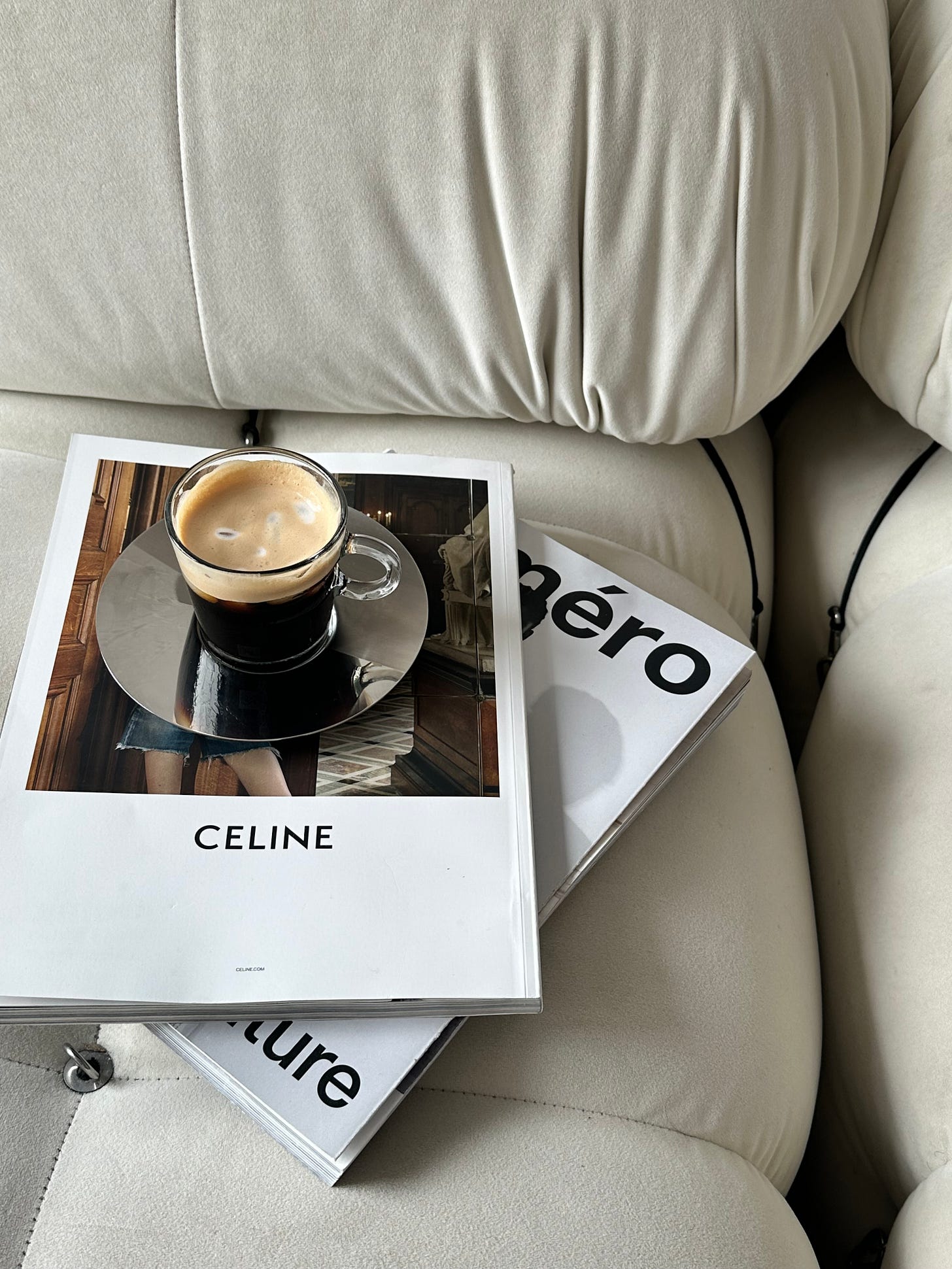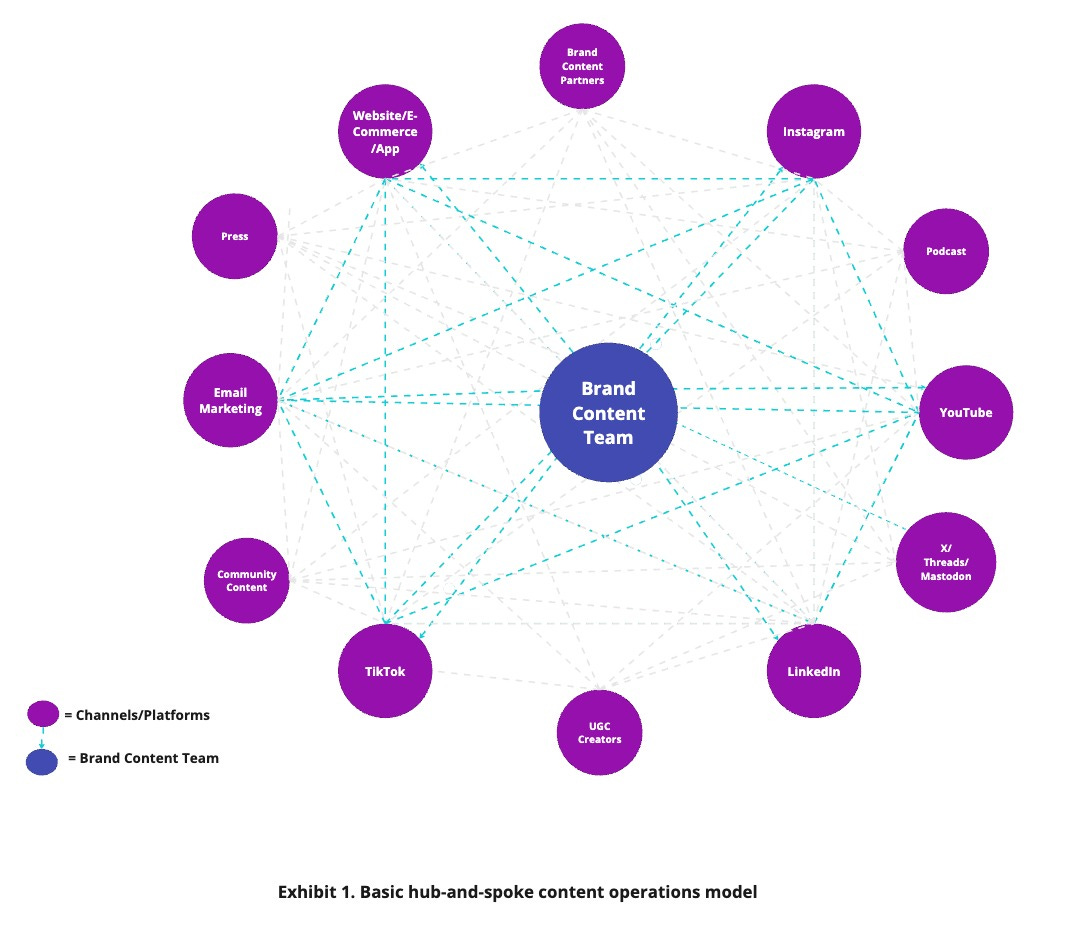Luxury Content Operations: Building Systems for Scalable Success
FSW examines the essential tools, processes, and strategies needed to streamline luxury content operations and drive measurable results.
Insights
Implementing a centralized content operations framework can help luxury brands ensure efficient planning, creation, management, and distribution of content, aligning with business objectives and enhancing audience engagement.
Creating an integrated content team or Content Center for Excellence can help luxury brands achieve consistent, scalable, and high-quality content outputs by unifying workflows, tools, and team collaboration.
Fashioning a tailored content strategy with a documented content operations framework and a test-and-learn approach can help brands refine processes and optimize content performance.
Building a content strategy that works at scale for luxury brands is not just about creating beautiful content. It is about putting solid systems in place to plan, create, manage, and distribute content effectively with intuitive, repeatable processes, guidelines, and rules. Without clear systems, processes, and workflows, even the most creative content ideas can get lost in execution.
Imagine this: Your brand hired a high-profile creative director to shake things up. Their debut runway show is a feast for the eyes, complete with an exotic location, celebrity collaboration, and immersive digital coverage. Critics praise it; looks go viral on social channels; and engagement metrics look good. Yet, months later, your sales tell a different story. The excitement fizzles, and the new collection fails deliver the results you expect.
Sound familiar? In luxury and fashion, content is not just about the designs or the campaigns. Content comprises anywhere your target audiences encounter your brand messaging. In execution, ineffective content often reflects a deeper issue of misaligned content operations. When content lacks structure and strategy, even the boldest ideas struggle to translate into success. The commercial impact of good creativity can be undermined in the long run by inefficient content operations. Content strategy is essential corporate strategy. As our IWT Content Effectiveness Index has shown, the brands winning with content are winning with consumers. Luxury brands that invest in content strategy backed by strong, tailored content operations can connect the dots between creativity, efficiency, and results.
What is Luxury Content Operations?
Like all strategy, content strategy only matters when you take action and implement it. For luxury brands, it is critical to build a centralized framework for planning, creating, and managing content with documented content processes, workflows, templates, policies, and guidelines. But, you also need a centralized operational infrastructure for content and people to manage all of it who understand their discrete roles and responsibilities and what the “good” or approved way of doing content within your brand is. This is why having a documented content operations framework with a documented operating model matters.
Here is a basic definition:
Content operations is the set of processes, people, and technologies needed for strategically planning, creating, managing, and analyzing all content across channels to ensure it aligns with business objectives and delivers value to the audience. It is, in essence, a framework for how [a brand] creates the content that powers its customer experience (Source: Aprimo)
Consider our hypothetical luxury brand again, only this time from an internal corporate angle:
Post-event, you go back to the drawing board to assess what went wrong with the content for your collection launch.
Despite being part of a larger conglomerate, your luxury brand teams are lean and are mapped to different parts of the corporate organization by function, often in different locations. Each team has a well-established way of doing what it does and collaborates with other teams as needed. Many of these teams have generous creative budgets when it comes to product development, runway shows, creative marketing, and social media campaigns, in-store retail experiences, and clienteling, particularly in support of celebrity-driven activations and partnerships. Yet, due to a streamlined corporate infrastructure, these brand teams rely heavily on third-party agencies to support the ideation, creation, production, and distribution of content (aka “creative”) across digital and IRL channels because they lack the capacity and time to do it themselves.
When it comes to content, each brand team runs its creative fiefdom, respectively planning and managing content for its specific channel, often with unique systems and platforms for storing and managing content and campaign assets, as well as for customer retention marketing (CRM), data analysis, and SEO. They also have unique approaches to creative ideation, with inspiration and idea sharing happening by email, Slack, or Teams.
In our scenario above, the problem with the hypothetical luxury brand’s way of doing content lies in the extreme siloing of each team and the fact that they all have different ways of managing content and gauging content success with overlapping and duplicative processes, systems, and content. This is likely a contributing factor to why their collection content—and, in turn, sales—fell flat. More worryingly, on a corporate level, this luxury brand is wasting huge amounts of money on ineffective, poorly targeted content and has no way of measuring content spend or content success since there is no centralized approach for content.
Content operations can help luxury brands build consistent and repeatable processes, guidelines, and ways of doing content that are brand-specific and employee-agnostic. If your social media lead and website lead quit at the same time, it is not a problem. Having content operations in place means that your brand already knows exactly what functional gaps need to be filled within your content team and, to an extent, the added value of each position and what they bring to the organization.
Content operations can help you answer questions, such as: Who is responsible for content management and oversight? Who approved this content before it was published? For what channel is this content idea best suited and who should create it? How successful is all of this content? How much of this content led to product sales? How expensive was this content and how long did it take to create? What can we do with all this content when the collection is over? How can we re-use or piece apart this content in different ways to drive brand storytelling across and within channels?
For fashion and luxury brands, investing in content operations is a critical step to making content meaningful, manageable, and scalable. And, again, by “content,” we mean our wide-ranging definition of “anywhere audiences encounter your brand messaging,” which can be digital or IRL+ and also written, verbal, or even visual.
What is a Luxury Content Operations Model?
So, what does a luxury content operations model comprise?
In its simplest form, a content operations framework contains a model that illustrates how content flows from channel to channel within your content ecosystem. But, a brand-specific content operations framework should also contain deeper diagrams of the organizational structure of content management within your brand, as well as documented workflows for how content is created, updated, and archived.
For less mature content ecosystems and smaller teams, a hub-and-spoke content operations model (see Exhibit 1) usually is best because it fully centralizes content as a functional area into one core team responsible for overarching brand content strategy and oversight.
Within enterprise contexts, this type of centralized content team is often called a “Content Center for Excellence” (CCoE). A CCoE empowers brand teams to develop and share content effectively and integrates content strategy, technology, governance, and innovation to enhance overall operational efficiency. The purpose of a CCoE is to align, streamline, and improve ROI of content efforts towards overarching business objectives.
More evolved content ecosystems map into a more holistic, integrated content operations framework (see Exhibit 2) with content responsibilities shared across an interconnected organization.
For leaner or smaller luxury brand teams, taking a centralized approach to content operations gives your brand:
A centralized team responsible for content planning and management
Simplified workflows and rules for content
A single content publishing workflow that covers content intake, development, updates, distribution, and archiving
Repeatable, scalable content processes
Content quality control and reliable, consistent content outputs
Imagine what your luxury brand could do with content at scale if everyone who handles content in your brand was on the same page, shared the same systems and tools, and had processes in place for regular collaboration.
What is in a Luxury Content Operations Framework?
Of course, the base content operating model is only one piece of a content operations framework. So, what does a luxury content operations framework comprise? Obviously, brand systems, tools, and people are highly specific. But, a basic content operations framework document is basically a “light” version of a content governance plan and should contain:
Content operations model that explains the relationship between your content teams and your external and internal content channels
Core team architecture with detailed roles and channel-by-channel responsibilities
Defined workflows for content intake, creation, management, distribution, and archiving that are closely mapped to the actual systems, tools, and roles your brand uses to manage content
Core brand policies and rules for content, including links to and/or a repository of brand content resources, including editorial style guides, brand guidelines, etc
Where to Start with Luxury Content Operations
In practice, content operations inevitably look different for every luxury brand. Enterprise-size multi-brand retailers interested in scaling integrated content personalization tools would benefit from a more decentralized content operations model, simply due to the volume and cadence of content involved, as well as the complexity of internal organizational structures. A heritage luxury brand with a more curated approach to brand content would benefit more from a more discrete, fully centralized content operations model not just because they have a smaller volume of content and fewer boots on the ground; but also because they have more highly refined content, which requires a more attenuated approach.
The best way for luxury brands to start with content operations is with the essential tools of content strategy:
Audit your content and identify gaps, opportunities, and challenges.
Create a brand-specific content strategy that documents your content vision, goals, channels, target audiences, specific channel-by-channel content architecture, and content types, as well as your priorities and roadmap for content-focused transformation and optimization.
Document an initial Content Operations Framework and Model and treat it as a living document that will evolve over time.
Take a test-and-learn approach. Lean into piloting content operations for a specific team or channel to find the best approach that works for your brand.






Awesome!
Thanks for sharing this…🩶